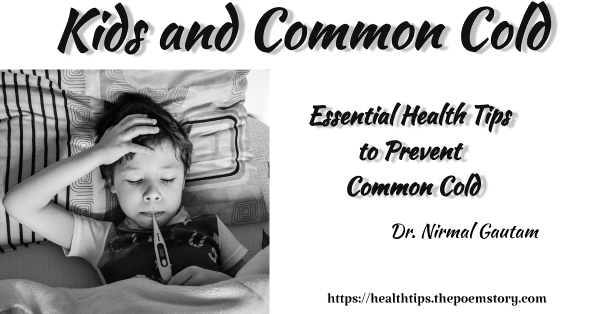Introduction to STIs and STDs
Understanding and Preventing STIs/STDs. Sexually transmitted infections (STIs) and sexually transmitted diseases (STDs) are terms often used interchangeably, yet they carry distinct meanings. An STI refers to the initial infection caused by bacteria, viruses, or parasites, which may or may not result in symptoms. When an STI progresses and starts manifesting symptoms, it is typically referred to as an STD. Understanding this distinction is crucial, as it underscores the importance of early detection and treatment to prevent the escalation of infections into more severe diseases.
STIs and STDs are primarily transmitted through sexual contact, including vaginal, anal, and oral sex. They can also be spread through non-sexual means such as blood transfusions, shared needles, and from mother to child during childbirth or breastfeeding. Common STIs include chlamydia, gonorrhea, syphilis, and human papillomavirus (HPV), while HIV and herpes are well-known STDs that have significant health repercussions if left untreated.
The impact of STIs and STDs on public health is profound. They contribute to a range of health complications including infertility, chronic pain, and increased risk of acquiring other infections like HIV. Furthermore, untreated STDs can lead to severe outcomes such as cancer and cardiovascular diseases. The economic burden is also considerable, with costs associated with medical care, diagnostics, and lost productivity.
Public health initiatives focus on education, prevention, and early treatment to mitigate the spread of STIs and STDs. Comprehensive sexual education, routine screenings, and accessible healthcare services play pivotal roles in managing these infections. By understanding the fundamentals of STIs and STDs, individuals can make informed decisions about their sexual health, contributing to the broader effort of reducing the prevalence and impact of these infections.
Explore Category: Sexual Health
Sexually transmitted infections (STIs) and sexually transmitted diseases (STDs)
Understanding and Preventing STIs/STDs

Table of Contents
Common Types of STIs/STDs
Sexually transmitted infections (STIs) and sexually transmitted diseases (STDs) encompass a broad range of infections transmitted through sexual contact. Understanding the most common types can aid in early detection, prevention, and treatment. Here, we explore some of the most prevalent STIs and STDs, including chlamydia, gonorrhea, syphilis, human papillomavirus (HPV), herpes simplex virus (HSV), and HIV/AIDS.
Chlamydia: Chlamydia is a bacterial infection often characterized by minimal or no symptoms. When symptoms do appear, they may include genital pain, discharge, and burning during urination. Transmitted through vaginal, anal, and oral sex, untreated chlamydia can lead to serious reproductive complications, including pelvic inflammatory disease (PID) and infertility.
Gonorrhea: Similar to chlamydia, gonorrhea is a bacterial infection that affects mucous membranes of the reproductive tract. Symptoms may include a burning sensation during urination, white, yellow, or green discharge, and in some cases, no symptoms at all. Untreated gonorrhea can lead to PID in women and epididymitis in men, both of which can cause infertility.
Syphilis: Syphilis is a bacterial infection that progresses through distinct stages. The primary stage is marked by a painless sore, followed by a rash in the secondary stage. If untreated, it can progress to latent and tertiary stages, causing severe complications, including neurological and cardiovascular damage. Transmission occurs through direct contact with syphilitic sores during sex.
Human Papillomavirus (HPV): HPV is a viral infection with various strains, some of which can cause genital warts or lead to cancers such as cervical, anal, and throat cancers. HPV is the most common STI and is primarily spread through skin-to-skin contact during sexual activity. Vaccination can significantly reduce the risk of infection.
Herpes Simplex Virus (HSV): HSV is categorized into two types: HSV-1, which primarily causes oral herpes, and HSV-2, which primarily causes genital herpes. Symptoms include painful blisters or sores on the genitals, rectum, or mouth. Both types are highly contagious and can be transmitted through direct contact with lesions or infected bodily fluids.
HIV/AIDS: Human Immunodeficiency Virus (HIV) attacks the immune system, leading to Acquired Immunodeficiency Syndrome (AIDS) if untreated. Early symptoms may resemble flu-like conditions, but as the virus progresses, it severely weakens the immune system. HIV is transmitted through blood, semen, vaginal fluids, and breast milk. Antiretroviral therapy (ART) can manage HIV and prevent progression to AIDS.
Recognizing and understanding these common STIs/STDs is crucial for effective prevention and treatment. Awareness of symptoms and transmission modes can help mitigate the risks and promote healthier sexual practices.
Prevention Methods
Protecting oneself and one’s partners from Sexually Transmitted Infections (STIs) and Sexually Transmitted Diseases (STDs) requires a multifaceted approach. One of the most effective methods is the consistent and correct use of condoms and dental dams. Condoms, which are available in both male and female versions, provide a barrier that reduces the risk of transmission of infections during vaginal, anal, and oral sex. Similarly, dental dams act as a protective barrier during oral sex, further reducing the risk of STI/STD transmission.
Vaccination also plays a crucial role in preventing certain STIs. The Human Papillomavirus (HPV) vaccine is highly effective in protecting against the strains of HPV that can lead to cervical cancer and genital warts. Additionally, the Hepatitis B vaccine can prevent Hepatitis B infection, which is a serious liver infection transmitted through sexual contact. Ensuring that individuals are up to date with these vaccinations can significantly lower their risk of contracting these infections.
Regular screening and testing are critical components of STI/STD prevention. Many STIs can be asymptomatic, meaning individuals may not show symptoms but can still transmit the infection to their partners. Regular testing allows for early detection and treatment, which can prevent further spread and reduce complications. Healthcare providers can offer guidance on how often individuals should be tested based on their sexual activity and risk factors.
The importance of mutual monogamy cannot be overstated. Engaging in a mutually monogamous relationship, where both partners are committed to only having sexual relations with each other, can greatly reduce the risk of STIs/STDs. However, it is essential that both partners have been tested and are free of infections before entering into such a relationship.
Sexual health education is another vital aspect of prevention. Comprehensive sexual health education provides individuals with the knowledge and skills they need to make informed decisions about their sexual health. This includes understanding how STIs/STDs are transmitted, recognizing symptoms, and knowing where to seek testing and treatment. Open and honest communication between partners about sexual history, testing, and prevention methods is also essential. Such discussions can help build trust and ensure that both partners are taking the necessary steps to protect their health.
The Role of Regular Testing
Regular testing plays a pivotal role in the early detection and management of sexually transmitted infections (STIs) and sexually transmitted diseases (STDs). Routine screenings are essential for identifying infections at an early stage, which not only helps in reducing transmission rates but also significantly improves health outcomes for individuals. By catching infections early, individuals can receive timely treatment, thereby preventing the progression of diseases and minimizing potential health complications.
The recommended frequency of STI/STD testing varies among different populations. For sexually active individuals, it is generally advised to get tested at least once a year. However, those with multiple partners or individuals who engage in high-risk behaviors may require more frequent screenings, such as every three to six months. Pregnant women are also advised to undergo STI/STD testing to ensure both maternal and fetal health. Men who have sex with men (MSM) and individuals with HIV should adhere to more stringent testing schedules as recommended by healthcare providers.
Several types of tests are available to screen for various STIs/STDs. These include blood tests, urine tests, and swabs of the genital, anal, or oral areas. Each test is designed to detect specific infections such as HIV, chlamydia, gonorrhea, syphilis, and herpes, among others. It’s crucial to consult with healthcare professionals to determine the appropriate tests based on individual risk factors and sexual health history.
Accessing testing services has become increasingly convenient with the availability of clinics, community health centers, and at-home testing kits. Many healthcare providers offer confidential testing services, ensuring privacy and encouraging individuals to take proactive steps toward their sexual health. Additionally, numerous public health initiatives and organizations provide free or low-cost testing options, making it accessible for everyone, regardless of financial status.
Encouraging regular testing is a critical component of proactive health management. By staying informed and routinely screened, individuals can play an active role in maintaining their sexual health and preventing the spread of STIs/STDs within the community.
Treatment Options for STIs/STDs
Treatment for sexually transmitted infections (STIs) and sexually transmitted diseases (STDs) varies significantly depending on the type of infection. Bacterial infections, such as chlamydia, gonorrhea, and syphilis, are typically treated with antibiotics. The most common antibiotics used include azithromycin and doxycycline for chlamydia, ceftriaxone for gonorrhea, and penicillin for syphilis. It is crucial to complete the full course of prescribed antibiotics, even if symptoms resolve before the medication is finished, to ensure the infection is entirely eradicated and to prevent antibiotic resistance.
Viral infections, on the other hand, require antiviral medications to manage and control the infection. For example, herpes simplex virus (HSV) infections are treated with antiviral drugs like acyclovir, valacyclovir, or famciclovir. Human immunodeficiency virus (HIV) management involves a combination of antiretroviral therapy (ART) medications to suppress the virus and maintain immune function. While antiviral medications do not cure viral STIs, they can significantly reduce symptoms, decrease viral load, and prevent transmission to others.
It is also essential for individuals diagnosed with an STI or STD to inform their sexual partners. Notification allows partners to seek testing and treatment if necessary, thus preventing the further spread of infections. Partner notification can be done directly or through anonymous notification services provided by some health departments.
Patients should be aware of potential side effects of their treatments, which can range from mild to severe. Common side effects of antibiotics include gastrointestinal discomfort, allergic reactions, and changes in vaginal flora, which may lead to yeast infections. Antiviral medications may cause headaches, nausea, and fatigue. It is important to discuss any adverse effects with a healthcare provider promptly.
In summary, understanding the appropriate treatment options for STIs and STDs is vital for effective management and prevention. Adhering to prescribed treatments, being mindful of side effects, and ensuring partner notification are key steps in addressing these infections responsibly.
Impact of STIs/STDs on Long-Term Health
Sexually Transmitted Infections (STIs) and Sexually Transmitted Diseases (STDs) pose significant threats to long-term health when left untreated. The repercussions of these infections can extend beyond immediate physical symptoms, potentially leading to severe and chronic health issues. One of the most alarming consequences is infertility, affecting both men and women. Infections like chlamydia and gonorrhea can cause pelvic inflammatory disease (PID) in women, which can damage the fallopian tubes and other reproductive organs, thereby hindering the ability to conceive.
Moreover, untreated STIs/STDs can lead to chronic pain. For instance, PID can result in persistent pelvic pain, while infections such as syphilis can cause long-term neurological complications if not adequately treated. Another significant concern is the increased risk of certain cancers. Human Papillomavirus (HPV), one of the most common STIs, is known to be a major cause of cervical cancer, as well as other genital and oropharyngeal cancers. Hepatitis B and C, also sexually transmittable, are closely linked to liver cancer.
Beyond physical health, the psychological impact of STIs/STDs cannot be overlooked. The stigma surrounding these infections can lead to feelings of shame, guilt, and isolation, adversely affecting mental health. Anxiety and depression are common among those diagnosed with STIs/STDs, making mental health support an essential component of comprehensive care. Addressing the emotional and psychological needs of individuals is crucial for their overall well-being and recovery.
The seriousness of STIs and STDs underscores the importance of timely and effective treatment. Early detection and intervention can prevent many of the long-term health issues associated with these infections. Regular screenings, responsible sexual practices, and open communication with healthcare providers are vital steps in managing and preventing the adverse consequences of STIs and STDs.
Dispelling Myths and Stigmas
Addressing the myths and stigmas surrounding sexually transmitted infections (STIs) and sexually transmitted diseases (STDs) is crucial in creating a supportive environment for those affected. Misconceptions often stem from a lack of accurate information, leading to unnecessary fear and discrimination. One common myth is that STIs and STDs only affect certain groups of people; however, the reality is that anyone who is sexually active can contract an infection.
Another prevalent misconception is that all STIs and STDs are incurable and result in severe health complications. While some infections, like HIV, require lifelong management, many STIs, such as chlamydia and gonorrhea, are treatable with antibiotics. Early detection and proper medical care significantly reduce the risk of long-term health consequences.
Stigmas are also perpetuated by cultural and social factors that associate STIs and STDs with moral judgment. This stigma can discourage individuals from seeking testing and treatment, fearing judgment or ostracization. It is essential to understand that STIs are medical conditions, not indicators of a person’s character or moral standing.
Overcoming these stigmas requires education and open dialogue. Public health campaigns and educational programs can play a significant role in disseminating factual information and encouraging safe sexual practices. Additionally, healthcare providers must foster a non-judgmental atmosphere, ensuring that patients feel comfortable discussing their sexual health without fear of discrimination.
Support networks, both online and offline, can also provide a sense of community for those affected by STIs and STDs. Sharing experiences and information helps to normalize the conversation around sexual health, reducing stigma and promoting understanding. By addressing these myths and stigmas, we can create an environment where individuals feel empowered to take control of their sexual health without fear of judgment.
Conclusion and Resources
In conclusion, understanding and preventing sexually transmitted infections (STIs) and sexually transmitted diseases (STDs) is crucial for maintaining overall sexual health. This comprehensive guide has covered essential aspects including the types of STIs/STDs, their symptoms, and the importance of prevention. Regular testing and prompt treatment are vital in managing these infections effectively, reducing the risk of complications, and preventing their spread.
Prevention strategies such as consistent use of condoms, vaccination, and open communication with sexual partners play a significant role in reducing the risk of contracting STIs/STDs. Regular screening is essential, especially for sexually active individuals, as many infections can be asymptomatic. Early detection through testing allows for timely treatment and can prevent long-term health issues.
For those seeking further information and support, numerous resources are available. The Centers for Disease Control and Prevention (CDC) offers comprehensive information on various STIs/STDs, prevention tips, and treatment options. Additionally, local sexual health clinics provide confidential testing and counseling services. Planned Parenthood and the American Sexual Health Association (ASHA) are also excellent sources for educational materials and support.
If you need assistance or have concerns about your sexual health, contacting your local sexual health clinic is a proactive step. These clinics offer a range of services including testing, treatment, and counseling. Many clinics also provide resources for safer sex practices and can connect you with support groups if needed.
Empowering yourself with knowledge and utilizing available resources are key steps in managing your sexual health. By staying informed and taking proactive measures, you can significantly reduce the risk of STIs/STDs and ensure a healthier, more informed approach to sexual well-being.
Explore more categories.
YouTube Channels
Our Other Sites:






